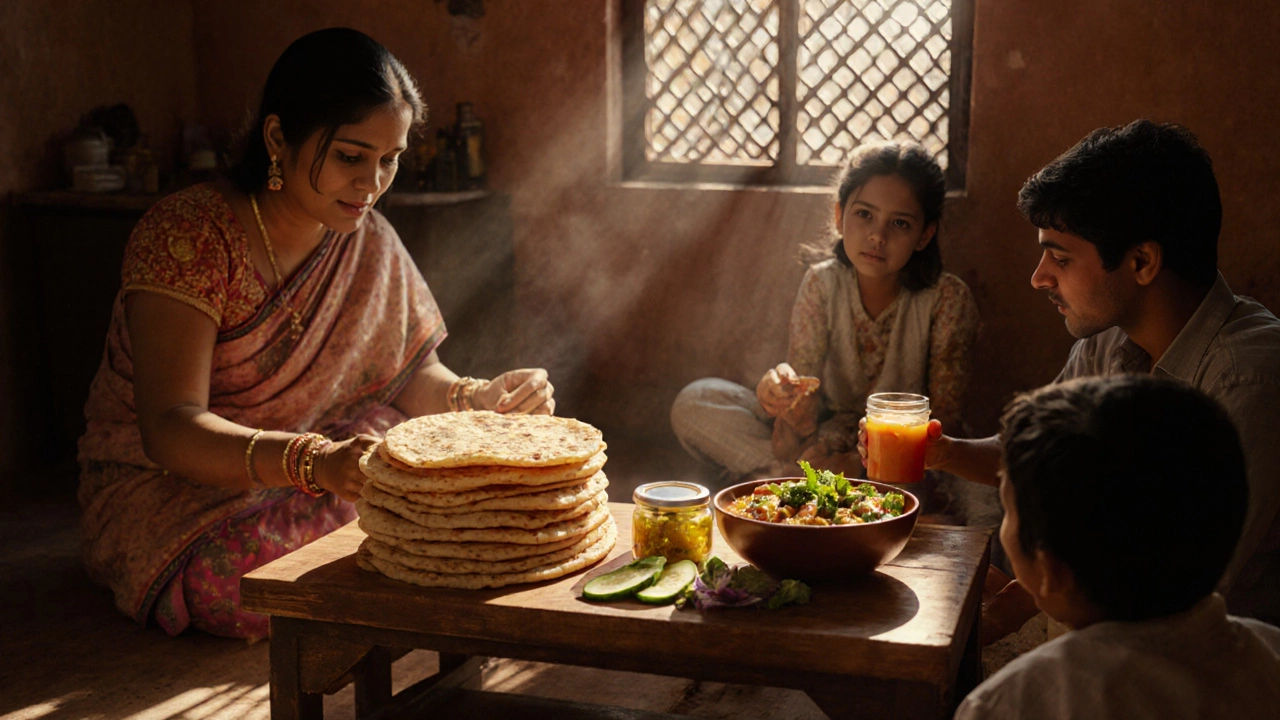
Most Popular Food in Gujarat: What Everyone Eats Daily
Discover why roti (chapati) is the most eaten food in Gujarat, its cultural role, health benefits, regional twists, and a step‑by‑step recipe.
When talking about Gujarat cuisine, the culinary tradition of Gujarat state in western India, known for its sweet‑savory balance and largely vegetarian dishes. Also known as Gujarati food, it mixes staples like millets, wheat, and dairy with a distinctive spice blend called chaunk. One of the most celebrated items is Dhokla, a steamed gram‑flour cake that exemplifies the light, airy texture prized in the region. Equally important is Gujarat street food, a bustling scene of quick bites such as fafda, sev, and the tangy sev usal that keep locals and travelers coming back for more. The cuisine also offers a range of Gujarati snacks, often called farsan, which showcase the same sweet‑spicy harmony in bite‑size form.
Gujarat cuisine thrives on a few core principles. First, the balance of flavors: a pinch of jaggery softens heat from green chilies, while a splash of lemon brightens any dish. Second, the use of tempering (chaunk) adds depth without overwhelming the palate. Dhokla, for example, starts with a batter of Bengal gram flour, yogurt, and a dash of baking soda, then receives a final drizzle of mustard‑seed oil, curry leaves, and fresh cilantro. This final step creates the signature glossy surface and the subtle crunch that food lovers adore. Street foods like fafda are deep‑fried, yet they are often paired with sweet‑sour chutneys that illustrate the region’s love for contrast. The snack culture—farsan, sev, and khakhra—relies on simple ingredients such as flour, spices, and oil, but each variation tells a story of local farming practices and seasonal availability.
Beyond the dishes themselves, Gujarat cuisine reflects social rituals. Morning meals frequently include the staple roti alongside a bowl of khichdi, while evening gatherings feature a spread of fafda‑jalebi, a classic sweet‑savory combo that symbolizes hospitality. Regional festivals bring out special preparations: during Navratri, people enjoy the energizing mixture of methi thepla and sweet shrikhand, while Uttarayan (kite festival) is synonymous with a generous serving of khaman and the ever‑popular bhajias. The cuisine’s adaptability also stands out—modern chefs experiment with fusion, adding cheese to dhokla or incorporating global grains, yet the underlying principles of balance and simplicity remain intact. All these elements—ingredients, techniques, cultural moments—intertwine to make Gujarat’s food scene both rooted and dynamic.
In the list below you’ll find a curated selection of articles that dive deeper into specific dishes, cooking tips, and the cultural backdrop of this vibrant cuisine. Whether you’re planning a street‑food crawl, looking for a quick dhokla recipe, or simply want to understand why Gujarati snacks are so addictive, the posts ahead provide practical insights and flavorful inspiration.

Discover why roti (chapati) is the most eaten food in Gujarat, its cultural role, health benefits, regional twists, and a step‑by‑step recipe.